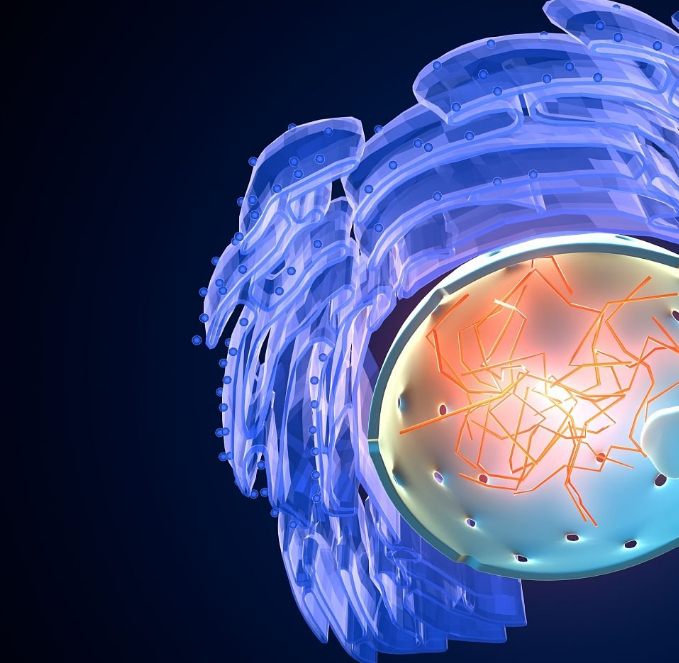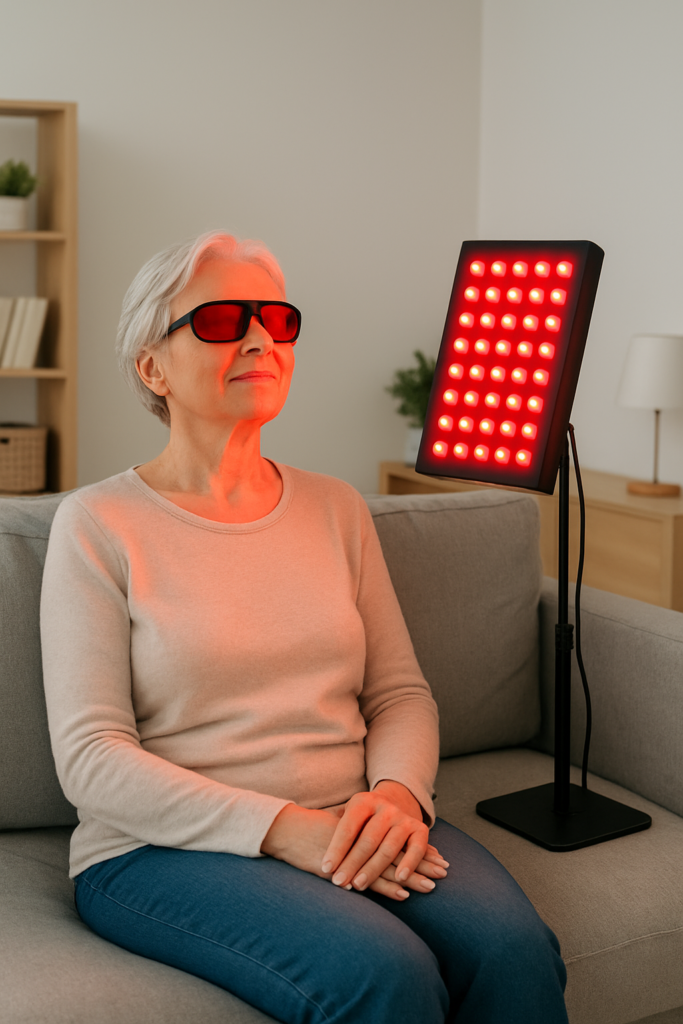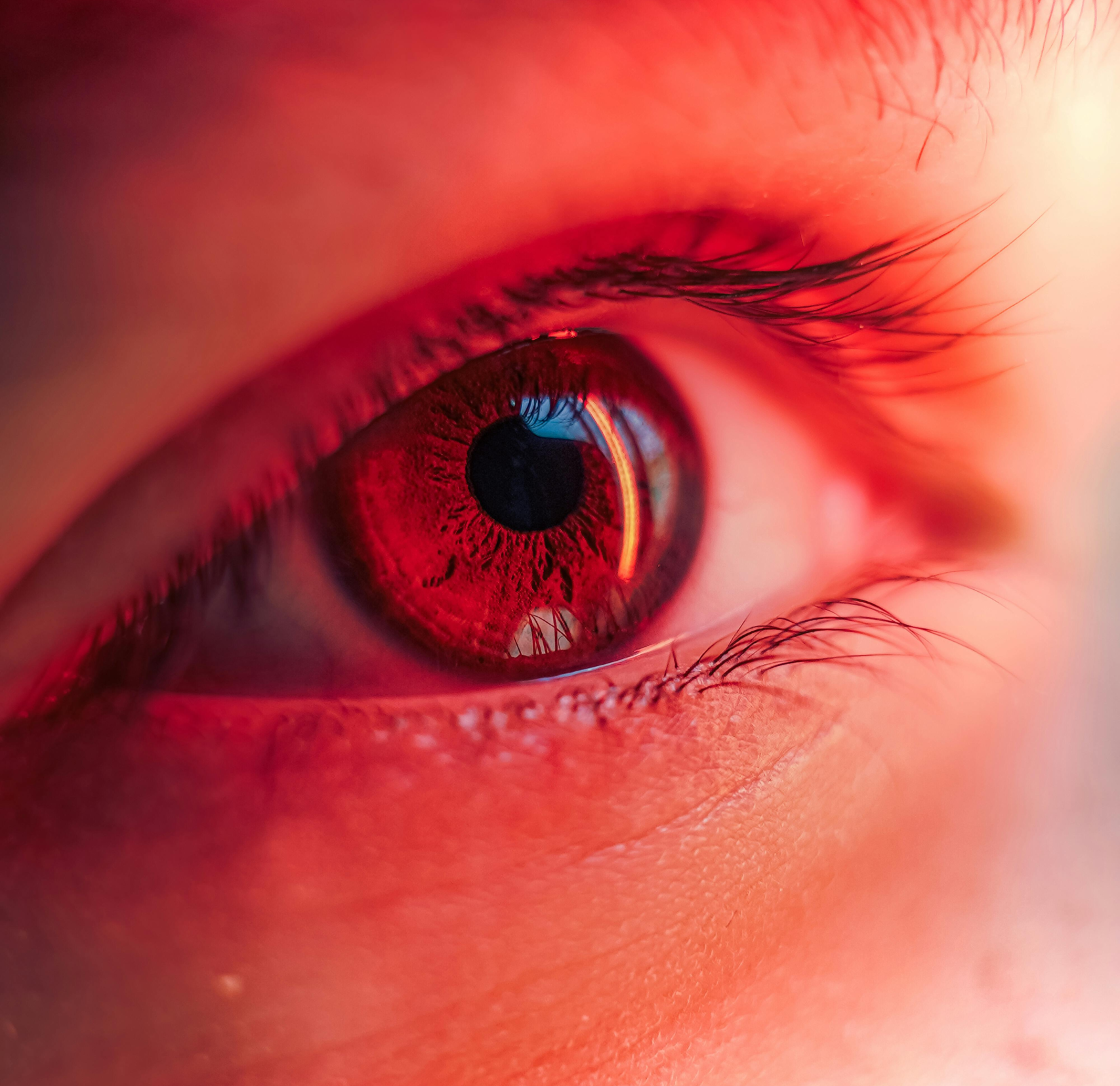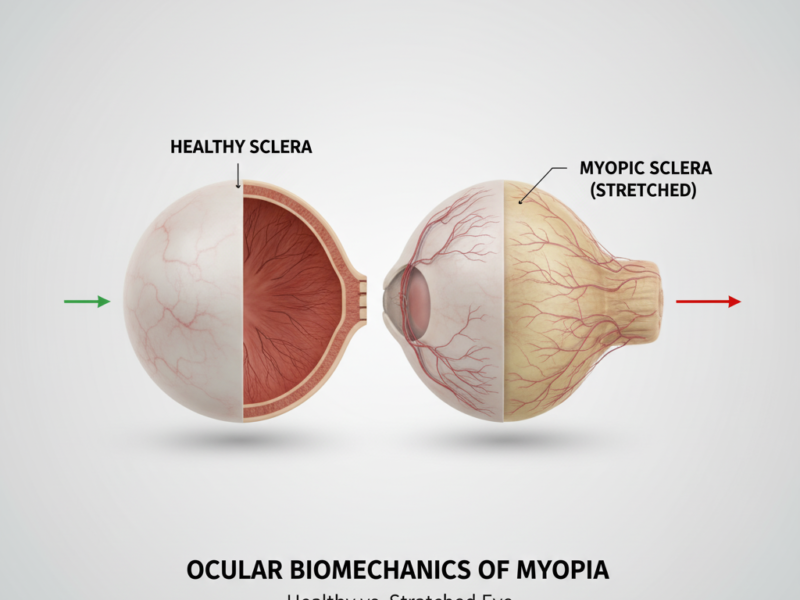Red Light Therapy for Eyes is rapidly moving from the fringe of biohacking into mainstream medical science. What began as a tool developed by NASA is now a popular home treatment, promising to enhance vision, slow aging, and combat the pervasive effects of digital eye strain. But does shining low-level red light into your eyes really work, or is it just another wellness trend?
This comprehensive guide dives deep into the science of Low-Level Light Therapy (LLLT), separating the proven clinical benefits from the marketing hype. We will explore the critical mitochondrial mechanism, examine the specific wavelengths involved, and detail safe, effective protocols for using Red Light Therapy for Eyes to target conditions ranging from Age-Related Macular Degeneration to simple eye fatigue. Our aim is to empower you with the evidence needed to proactively incorporate this technology into your long-term vision health strategy.
The mechanism behind Red Light Therapy for Eyes is not mystical; it is purely biological, centered around optimizing the energy production of our cells, specifically in the mitochondria. This process is scientifically termed Photobiomodulation (PBM).
1. The Science of Low-Level Light Therapy (LLLT)
The mechanism behind Red Light Therapy for Eyes is not mystical; it is purely biological, centered around optimizing the energy production of our cells, specifically in the mitochondria. This process is scientifically termed Photobiomodulation (PBM).

How LLLT Works: The Mitochondrial Mechanism
The retina is one of the most metabolically active tissues in the entire human body. Its photoreceptor cells demand massive amounts of energy (ATP) to maintain the continuous process of seeing. When mitochondrial function declines—a common outcome of aging or chronic oxidative stress—the energy output drops, leading to vision impairment.
When the eyes are exposed to specific wavelengths of red or near-infrared light, photons are absorbed by the mitochondrial complex, triggering a chain reaction:
- Nitric Oxide Release: Red light photons are absorbed by a critical enzyme known as Cytochrome c Oxidase. This absorption temporarily displaces Nitric Oxide (NO) that has accumulated and inhibited the enzyme’s function.
- Increased ATP Production: With NO released, Cytochrome c Oxidase can process oxygen far more efficiently. This dramatically ramps up the cell’s production of Adenosine Triphosphate (ATP)—the fundamental cellular energy currency.
By boosting cellular energy, Red Light Therapy for Eyes allows the delicate retinal cells to repair DNA damage, reduce inflammation, and function optimally, reversing metabolic slowdown.
Did You Know?
The retina’s mitochondria age faster than those in almost any other part of the body. Pioneering studies in the UK showed that exposing the eyes to 670 nanometer (nm) red light for just three minutes a day could significantly reverse the decline in color vision and acuity in individuals over 40, effectively helping cells recharge their power source.
Wavelengths: Red Light (630–700 nm) vs. Near-Infrared (780–1100 nm)
The success of LLLT is highly dependent on utilizing the exact wavelengths that the mitochondria are tuned to absorb.
- Red Light (approx. 630 nm to 700 nm): This range provides effective absorption in the retina and is crucial for superficial healing and energy boosting. The 670 nm wavelength, in particular, has become the gold standard in vision studies due to its optimal absorption by retinal cells.
- Near-Infrared (NIR) Light (approx. 780 nm to 1100 nm): NIR penetrates deeper into tissues (muscles, bone). While beneficial for inflammation behind the orbit, it must be used cautiously around the eye as excessive penetration can cause thermal damage.
Choosing a device specifically calibrated for the 670 nm wavelength is paramount for safe and effective Red Light Therapy for Eyes.
The Key to Cellular Energy: Cytochrome c Oxidase
Cytochrome c Oxidase (COX) acts as the bottleneck in the mitochondrial energy chain. As we age, the efficiency of COX declines, leading to an energy deficit in the retina. Red Light Therapy for Eyes effectively “restarts” this enzyme, ensuring a steady, high-output supply of ATP. This is why RLT is primarily considered an anti-aging therapy for the eyes, addressing the root cause of metabolic decline.
2. Proven Benefits of Red Light Therapy for Eyes
Clinical research, particularly pioneering work conducted at the University College London, has provided compelling evidence for the efficacy of targeted Red Light Therapy for Eyes.
Reversing Age-Related Vision Decline
One of the most exciting findings is RLT’s ability to improve vision in individuals over 40. Studies demonstrated that short, specific exposure to the 670 nm wavelength could significantly enhance color contrast sensitivity and visual acuity. The effect is theorized to be directly linked to the reversal of age-related mitochondrial efficiency loss in the photoreceptors. This positions RLT as a cutting-edge, non-invasive treatment for maintaining crystal-clear vision as we age.
Enhancing Mitochondrial Function in Retinal Cells
Beyond general acuity, RLT specifically targets the most vulnerable parts of the visual system: the mitochondria in the retina. By boosting ATP, the therapy fortifies the retinal pigment epithelium (RPE), which plays a protective and nutritional role for the photoreceptors. A healthy RPE is crucial for preventing conditions like dry Age-Related Macular Degeneration (AMD).
Reducing Eye Fatigue and Digital Strain Symptoms
In our digital era, Digital Eye Strain (or Computer Vision Syndrome) is an epidemic. The symptoms—tiredness, dryness, and headaches—are often metabolic, resulting from muscle and cellular fatigue due to continuous screen exposure. Since Red Light Therapy for Eyes boosts cellular recovery and ATP, it acts as a powerful biological recharge for tired eyes, reducing recovery time and alleviating chronic digital fatigue.

3. Applications in Ocular Health
The therapeutic potential of Red Light Therapy for Eyes extends beyond general anti-aging into the management of specific, complex ocular diseases.
Treating Age-Related Macular Degeneration (AMD)
AMD is the leading cause of irreversible vision loss in older adults. While LLLT is not a primary treatment for the wet (neovascular) form of AMD, several clinical trials have shown its value in the dry (atrophic) form. By increasing metabolic activity in the retina and reducing drusen (waste product) accumulation, RLT helps slow the progression of dry AMD and improves visual function in some patients.
Potential for Diabetic Retinopathy Management
Diabetic retinopathy is caused by damage to the retinal blood vessels due to high blood sugar, leading to poor oxygen delivery and inflammation. Early research suggests that Red Light Therapy for Eyes may have a protective effect by reducing retinal inflammation and improving local circulation, thereby mitigating some of the key drivers of this complex disease.
Use in Dry Eye Syndrome and Inflammation
Though RLT is primarily known for its retinal effects, its general anti-inflammatory properties are beneficial for the ocular surface. Low-level red light can help modulate inflammation in the meibomian glands, which are crucial for producing the oily layer of the tear film. This makes RLT a complementary and non-invasive therapy for certain forms of chronic dry eye syndrome.
Frequently Asked Questions (FAQ) about Red Light Therapy for Eyes
Q: Is Red Light Therapy for Eyes safe for home use? A: When using FDA-cleared devices and following manufacturer guidelines, RLT is generally considered safe. It is crucial to ensure the device operates within the optimal, non-heating red and near-infrared wavelengths (typically 670 nm). Avoid prolonged exposure and high power density devices near the eyes without professional guidance.
Q: How quickly can I expect to see results from Red Light Therapy? A: Results vary, but many clinical studies suggest that significant improvements in color contrast sensitivity and vision acuity (especially in older adults) can be measured after 6 to 12 weeks of consistent, short daily treatments (e.g., 3 minutes). Consistency is key to achieving optimal mitochondrial function.
Q: Can Red Light Therapy help with my Digital Eye Strain? A: Yes. Digital Eye Strain is often linked to mitochondrial fatigue in the eye’s muscle and photoreceptor cells. By boosting ATP production, RLT can help these cells recover faster, potentially leading to a reduction in symptoms like eye fatigue, dryness, and strain headaches.
Q: Is there any risk of damaging my retina with Red Light Therapy? A: The risk of retinal damage is low provided you use certified low-level light therapy (LLLT) devices designed for home use and stay within recommended power and time limits. Never use industrial or high-powered infrared heating lamps near the eyes, as these can cause significant thermal damage.
Conclusion: Illuminating the Future of Vision
Red Light Therapy for Eyes represents one of the most exciting frontiers in vision longevity and biohacking. The underlying science—photobiomodulation’s ability to recharge aging mitochondria—offers a compelling, non-invasive method to combat age-related decline and cellular fatigue.
While research is ongoing, the evidence supporting the targeted use of low-level red light, particularly at the 670 nm wavelength, for improving visual function and fighting macular degeneration is robust. For those seeking to proactively maintain their vision in the digital age, integrating a safe RLT protocol could be a powerful addition to a comprehensive eye health strategy. Always prioritize safety: consult with your eye care professional before beginning any new treatment to ensure it complements your current vision health profile.



